What is an Online Cover Letter?
An online cover letter is a digital document, a written introduction, that accompanies your resume when applying for jobs through online platforms. It is your first chance to make a strong impression on a potential employer. Unlike traditional cover letters sent via mail, online cover letters are typically submitted through online application portals or pasted directly into the body of an email. This means you have an excellent opportunity to connect with a potential employer. Your cover letter is a space to personalize your application, express your genuine interest in the specific role and company, and highlight why you are the ideal candidate. The cover letter gives you an excellent space to add value to your application.
Why is an Online Cover Letter Important?
An online cover letter is an important part of your job application. It allows you to go beyond your resume’s bullet points. This document is the perfect place to convey your personality, enthusiasm, and genuine interest in the job and the company. The online cover letter gives you a better space to connect with the hiring manager on a more personal level. It allows you to emphasize why you are a good fit, highlighting your unique value. A well-crafted cover letter enables you to address any potential gaps in your resume and tailor your application to the specific requirements of the job. It shows that you have taken the time to research the company and understand the role, demonstrating your commitment. In a competitive job market, a compelling cover letter can be the deciding factor in whether your application receives serious consideration.
Key Components of a Compelling Online Cover Letter
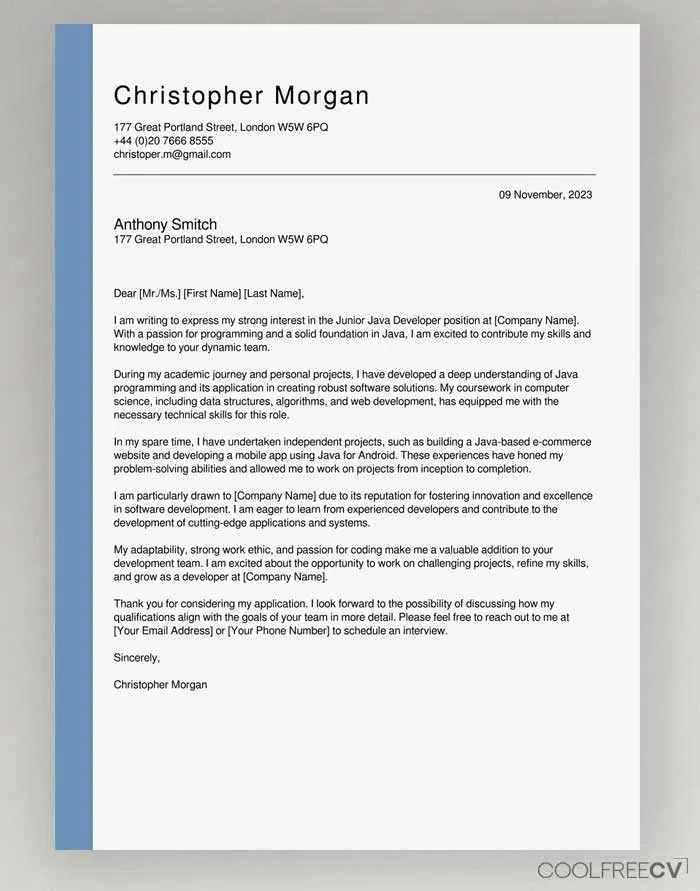
A great online cover letter is comprised of several key components. These elements all play a key role in effectively communicating your qualifications and capturing the reader’s attention. These components include a professional header, a personalized greeting, well-structured body paragraphs that showcase your value, a strong call to action, and a polished closing. The header provides your essential contact information, ensuring the recruiter can easily reach you. The greeting sets the tone for the letter, while the body paragraphs highlight your relevant skills, experience, and enthusiasm for the role. A strong call to action encourages the recruiter to take the next step. You have one shot with your application. The closing leaves a positive final impression. These elements are crucial. Understanding how to effectively write these components can greatly improve your chances of getting an interview.
Header Essentials
The header of your online cover letter should include your full name, contact information (phone number and email address), and optionally, your LinkedIn profile URL. Make sure the header information is accurate and up-to-date, using a clear and readable font. This allows the recruiter to contact you easily. It’s also important to ensure that your email address sounds professional, using your full name. Keep the header concise and easy to find. Double-check all the information for accuracy before submitting your application. This is an important opportunity to get noticed.
Professional Greeting
The greeting is a chance to make a positive first impression. Avoid generic greetings like “Dear Sir/Madam.” Whenever possible, address the hiring manager by name. Research the company website or LinkedIn to find the name of the person reviewing applications. If you’re unable to find a specific name, use a professional salutation, such as “Dear Hiring Manager” or “Dear [Department Name] Team.” This shows you’ve made the effort and have paid attention to detail, setting a professional tone from the start. If the job posting provides a contact person, use that name to further personalize the greeting. Make your greeting unique.
Body Paragraphs: Showcasing Your Value
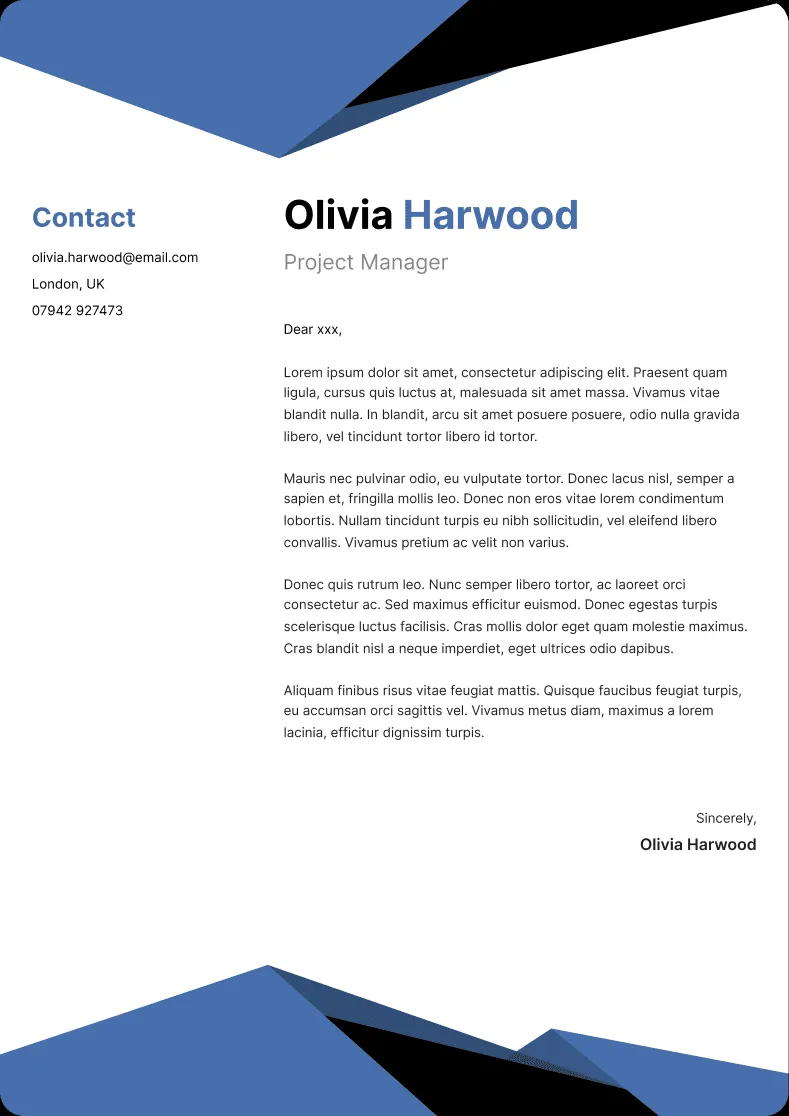
The body of your online cover letter is where you can showcase your value to the employer. Start with a compelling opening that captures the reader’s interest, stating why you are applying and what excites you about the role. In the subsequent paragraphs, highlight your most relevant skills and experiences, providing specific examples to demonstrate your accomplishments. Quantify your achievements whenever possible, using numbers and data to showcase your impact. Tailor your content to match the requirements of the job description, emphasizing the qualifications that align with the employer’s needs. The body paragraphs allow you to clearly state how your skills can benefit the company. The body of your cover letter is very important. This section gives you a chance to explain your value to the company.
Highlighting Relevant Skills and Experience
When highlighting your skills and experience, focus on the most relevant aspects of your qualifications that match the job requirements. Carefully review the job description and identify the key skills and qualifications the employer is seeking. Then, provide specific examples of how you have demonstrated these skills in previous roles or projects. Use the STAR method (Situation, Task, Action, Result) to structure your examples. Provide context, describe the task, detail the actions you took, and highlight the results you achieved. Quantify your accomplishments whenever possible to showcase the impact of your work. This approach allows you to present a clear, concise, and compelling picture of your capabilities and how they align with the employer’s needs. Make sure your examples are up to date and tailored to the specific job.
Demonstrating Enthusiasm and Fit
Demonstrating enthusiasm and fit is crucial for making a positive impression. Show your genuine interest in the role and the company. Research the company’s values, mission, and recent projects to understand what makes them unique and explain why you are drawn to them. Mention how your personal and professional goals align with the company’s objectives. Mentioning how your skills can contribute to the company’s success demonstrates your understanding of their needs. Tailoring your online cover letter to reflect the company’s culture and values shows that you have invested the time and effort to understand them, making you a more compelling candidate. Show how you can add value and provide a glimpse of what you can bring to the team.
Tailoring Your Letter to Each Application

Tailoring your cover letter to each application is essential for demonstrating your sincere interest and understanding of the specific role. Generic cover letters that are sent to multiple companies are easily identifiable and often lead to immediate rejection. For each job application, carefully review the job description and identify the key requirements, skills, and qualifications the employer is seeking. Customize your letter to highlight the skills and experiences most relevant to the role. Mention specific details about the company or the position that resonate with you, showcasing your knowledge and research. This shows that you have put in the extra effort to demonstrate how your unique strengths align with the company’s needs. You want to make a connection.
Crafting a Strong Call to Action
A strong call to action is crucial for prompting the recruiter to take the next step. After highlighting your skills and demonstrating your enthusiasm, clearly state your desire for an interview. Express your interest in discussing your qualifications further and reiterate your availability. Make it easy for the hiring manager to move forward. It can be as simple as saying, “I am eager to discuss how my skills can benefit your team. Thank you for your time and consideration. I look forward to hearing from you soon.” Include a professional closing, such as “Sincerely” or “Best regards,” followed by your full name. Ensure your closing is professional and positive, leaving a lasting good impression.
Formatting Tips for Online Cover Letters
Proper formatting is crucial for ensuring that your online cover letter is easily readable. This is key to a positive first impression. Use a professional font, such as Arial or Times New Roman, and maintain consistent font sizes and spacing. Ensure your letter is well-structured, with clear headings and subheadings to break up the text and guide the reader. Use short, concise paragraphs and bullet points to highlight key points and make the information easier to digest. Avoid excessive use of bolding, italics, or underlining, which can distract from the content. Formatting is important. Choose formatting that is designed to convey your message effectively.
Font and Readability
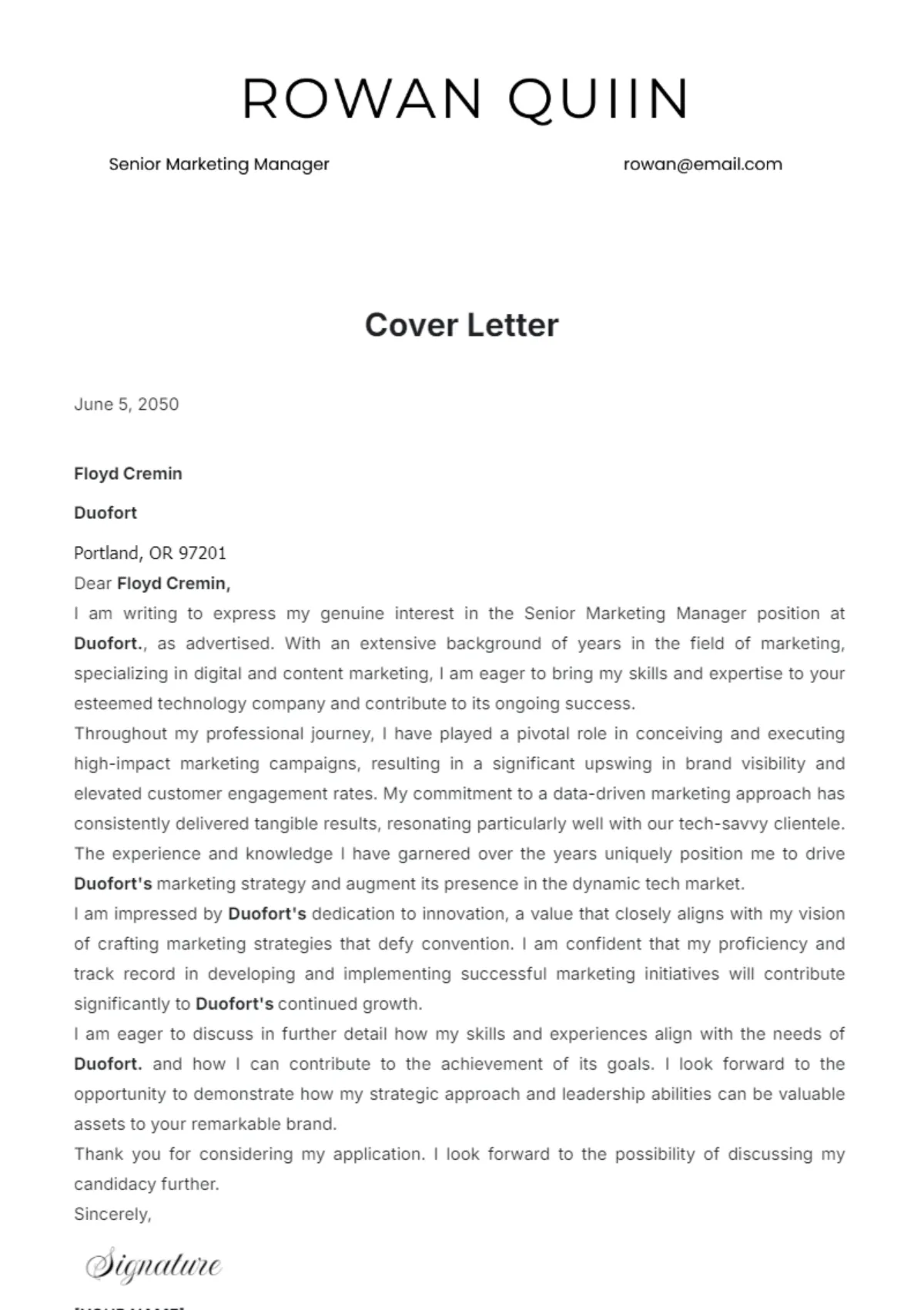
Choose a professional and easily readable font. Avoid fonts that are overly ornate or difficult to read, as they can detract from the content. Arial and Times New Roman are safe and widely accepted choices that ensure your document looks professional. Use a font size between 10 and 12 points for the body text to maintain readability. Also, use consistent font sizes and styles throughout the document to create a cohesive appearance. Ensure adequate line spacing to prevent the text from appearing cramped, making it easier for the reader to scan and digest the information quickly. Proper font and readability contribute to a positive first impression.
File Format Best Practices
When submitting your online cover letter, always save it as a PDF file. PDF files preserve the formatting, ensuring that your letter appears as intended regardless of the recipient’s operating system or software. Avoid using file formats that can be easily edited or modified, such as DOC or DOCX, as these can compromise the formatting and may be unintentionally altered. Name your file professionally, including your name and the job title to make it easier for the recruiter to identify and organize your application. This also presents a professional image and shows your attention to detail. If the job posting specifies a particular file format, be sure to follow those instructions exactly to show your ability to follow directions.
Proofreading and Editing
Proofreading and editing are critical steps to ensure your cover letter is error-free. Carefully review your letter for any typos, grammatical errors, and inconsistencies. Use a grammar checker and spell checker, but do not solely rely on them, as they may miss subtle errors. Read the letter aloud to catch any awkward phrasing or sentences that don’t flow smoothly. Ask a friend, family member, or career advisor to review your letter for a fresh perspective. A second pair of eyes can often catch mistakes that you may have overlooked. A cover letter free of errors demonstrates your attention to detail, showing that you have put thought into your application.
Common Mistakes to Avoid

Avoiding common mistakes is essential for creating a great cover letter. These mistakes can negatively affect your application. Avoid generic templates, which show a lack of personalization and demonstrate a lack of genuine interest in the role. Proofread your letter carefully to eliminate typos and grammatical errors, as these can make you appear unprofessional. Make sure your letter is tailored to the specific job and company, and avoid simply rehashing your resume. Show how your skills and experiences match the job requirements.
Generic Templates
Using generic templates is a common mistake that can signal to the hiring manager that you have not invested the time or effort. Generic templates often lack personalization and fail to demonstrate your genuine interest in the role or the company. These types of letters are less likely to capture the reader’s attention or make a positive impression. Instead of using a template, write a unique cover letter for each job application. Personalize it by highlighting the specific skills and experiences that align with the job requirements. Show that you have researched the company and understand its values. This approach demonstrates your genuine interest and makes you stand out.
Typos and Grammatical Errors
Typos and grammatical errors can make you appear unprofessional, even if you have excellent qualifications. These errors can distract the reader and undermine your credibility. Proofread your cover letter multiple times and consider using spell-check and grammar-check tools. However, do not rely solely on these tools, as they may not catch all errors. Read your letter aloud to catch awkward phrasing and ensure your writing flows smoothly. Ask someone else to review your cover letter for a fresh perspective. A second pair of eyes often catches mistakes that you may have overlooked. A cover letter free of errors demonstrates your attention to detail, showing that you have put thought into your application.
Lack of Personalization
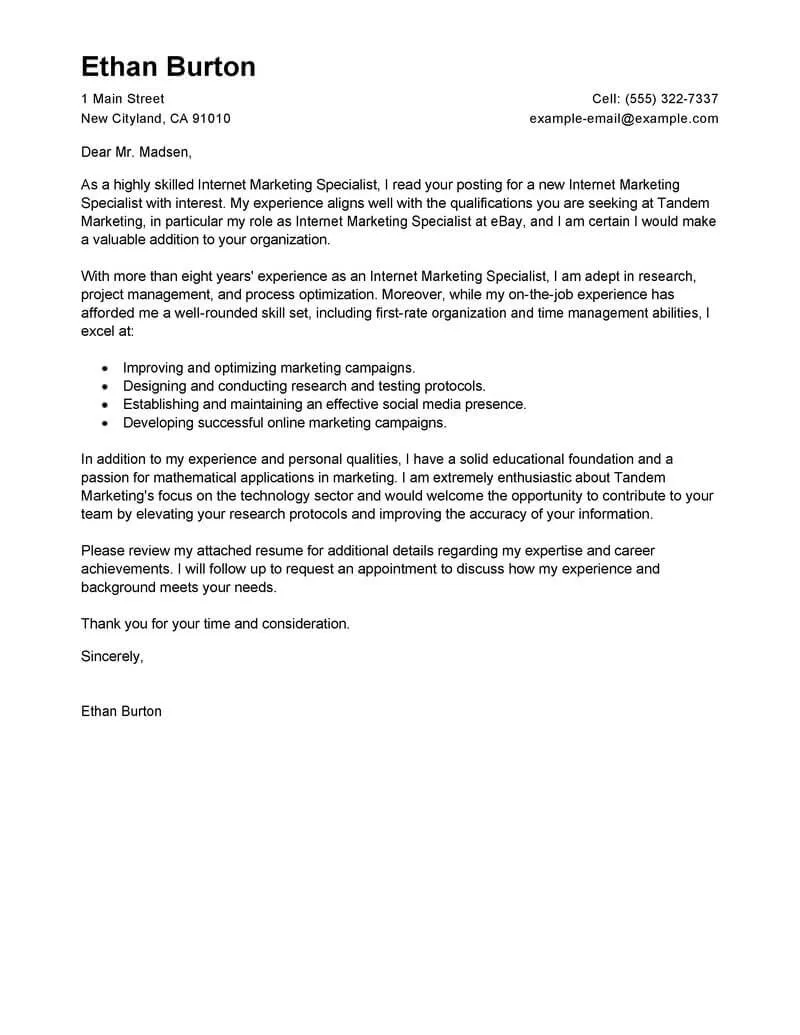
A lack of personalization in your online cover letter can diminish its impact. Generic letters that do not address the specific job requirements and company values fail to capture the reader’s attention. When writing your cover letter, avoid simply restating your resume. Instead, focus on tailoring your letter to the specific job, highlighting the skills and experiences that are most relevant to the role. Show your genuine interest by mentioning the company, its mission, or its recent projects. Demonstrating how you can contribute to their success and what makes you unique makes your letter more engaging and memorable. Personalization demonstrates that you’ve taken the time to understand the company, showing that you have invested in your application.
Tips for Different Job Types
The approach to writing your online cover letter can vary depending on the type of job you are applying for. For entry-level positions, emphasize your education, relevant coursework, and any internships or volunteer experiences. If you are an experienced professional, highlight your accomplishments and the impact you have made in your previous roles. Be sure to showcase your expertise and demonstrate how you can bring valuable skills and knowledge to the company. Customizing your cover letter to suit the specific job type is essential to showcasing your unique value and increasing your chances of securing an interview.
Entry-Level Positions
For entry-level positions, focus on your education, relevant coursework, and any internship or volunteer experiences. If you lack significant professional experience, emphasize your academic achievements, skills acquired through projects, and any transferable skills gained from other experiences. Highlight any extracurricular activities, leadership roles, or volunteer work that demonstrate your initiative, teamwork, or other valuable qualities. Show that you have the necessary foundation and potential to succeed in the role. Be sure to express your eagerness to learn and grow within the company. Clearly articulate your career aspirations and show your commitment to building a successful career. This approach showcases your potential and makes you a compelling candidate.
Experienced Professionals
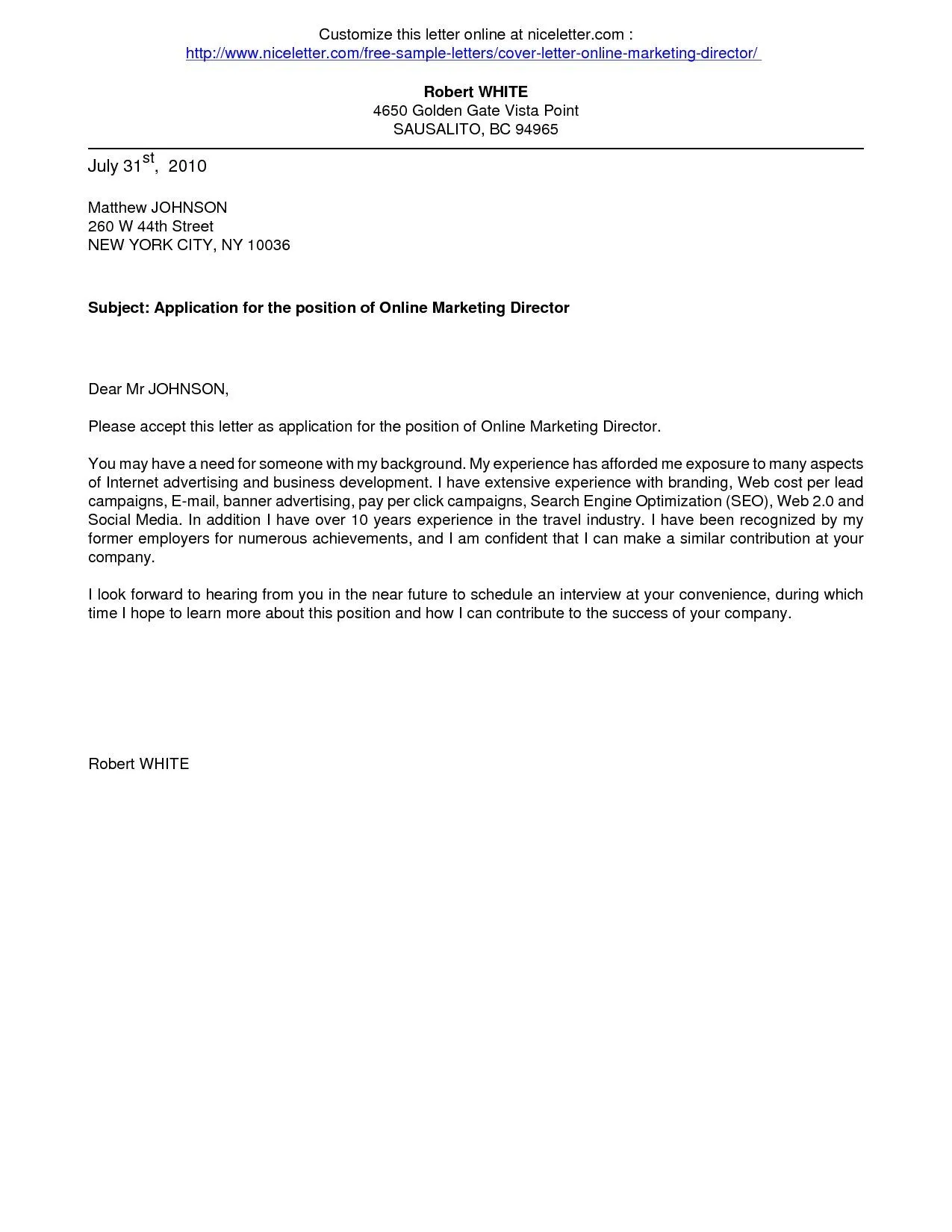
For experienced professionals, highlight your key accomplishments and the impact you have made in previous roles. Quantify your achievements whenever possible, using numbers and data to showcase your results. Tailor your cover letter to the specific requirements of the job and the needs of the company. Demonstrate your expertise and explain how you can bring valuable skills and knowledge to the team. Focus on the achievements that are most relevant to the role, providing specific examples of your successes. Highlight your leadership experience, management skills, and any contributions you have made to previous employers. Emphasize how you can add value and contribute to the company’s goals. This approach demonstrates your value and increases your chances of securing an interview.
Follow-up Strategies After Submitting Your Cover Letter
After submitting your online cover letter, it’s a good idea to follow up with the hiring manager or recruiter to express your interest and reiterate your qualifications. It’s generally appropriate to send a follow-up email or make a phone call one to two weeks after submitting your application, but wait until the job posting has closed. This shows your enthusiasm and commitment to the role. Keep your follow-up brief and to the point, reiterating your interest in the position and thanking the hiring manager for their time. Reference the specific job and the date you submitted your application. Also, use your follow-up to re-emphasize why you are a good fit, based on the key requirements of the role, and re-emphasize your availability. By following up, you demonstrate your initiative and increase your chances of getting an interview. The timing can vary, so review any specific instructions given in the job posting. Always take care.
